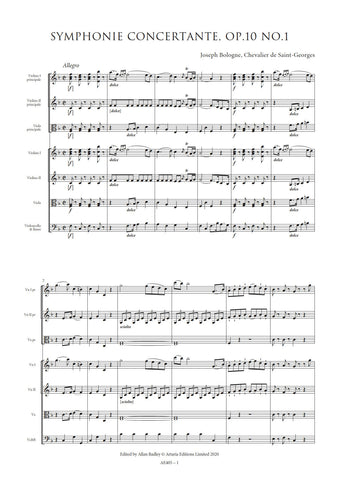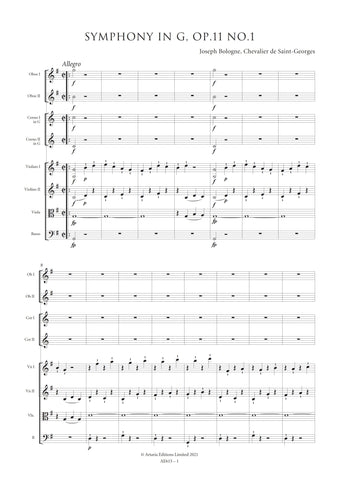Saint-Georges, Joseph Bologne de: Symphonie Concertante in E flat major, Op.13 No.1 (AE613) – sheet music
Previous Product Next Product
Description |
Saint-Georges, Joseph Bologne de (1745-1799)
|
||||||||||||||||||||||
Details |
As its designation suggests, the symphonie concertante is a hybrid genre that draws on both the symphony and concerto traditions. In the eighteenth century the symphonie concertante assumed two broad styles: a work that was fundamentally symphonic in conception but with important obbligato parts for two or more instruments, or a work that was in most respects indistinguishable from a concerto with multiple soloists in its retention of the characteristic hybrid sonata-ritornello structure. Saint-Georges favoured the second approach, perhaps because as a virtuoso himself he felt instinctively more drawn to the concerto than the symphony. Both types of work, however, frequently differ from their models in their cyclic structures and in France, where the symphonie concertante enjoyed great popularity, it is common to find two-movement works rather than works in three or four movements. These two-movement symphonies concertantes typically have a conventional first movement followed by a rondo with no intervening slow movement. The two symphonies concertantes, Op.9 are excellent examples of this type of work but, as Op.10 No.1 demonstrates, Saint-Georges occasionally abandons the rondo second movement in favour of a brisk, finale using a truncated sonataritornello structure. The solo writing in the symphonies concertantes is challenging and shows little evidence of Saint-Georges’ concern to accommodate players less skilled than himself. The harmonic self-sufficiency of the three-part solo grouping in the Op.10 symphonies concertantes allows Saint-Georges to write quite lengthy passages in which the orchestra is silent. The resulting juxtaposition of orchestral and chamber music textures is highly effective. Something of the same quality is encountered in the works for two violins where the solo sections are very thinly scored and are often curiously lacking in rhythmic animation especially in the accompaniments. |
||||||||||||||||||||||
Score Preview |














